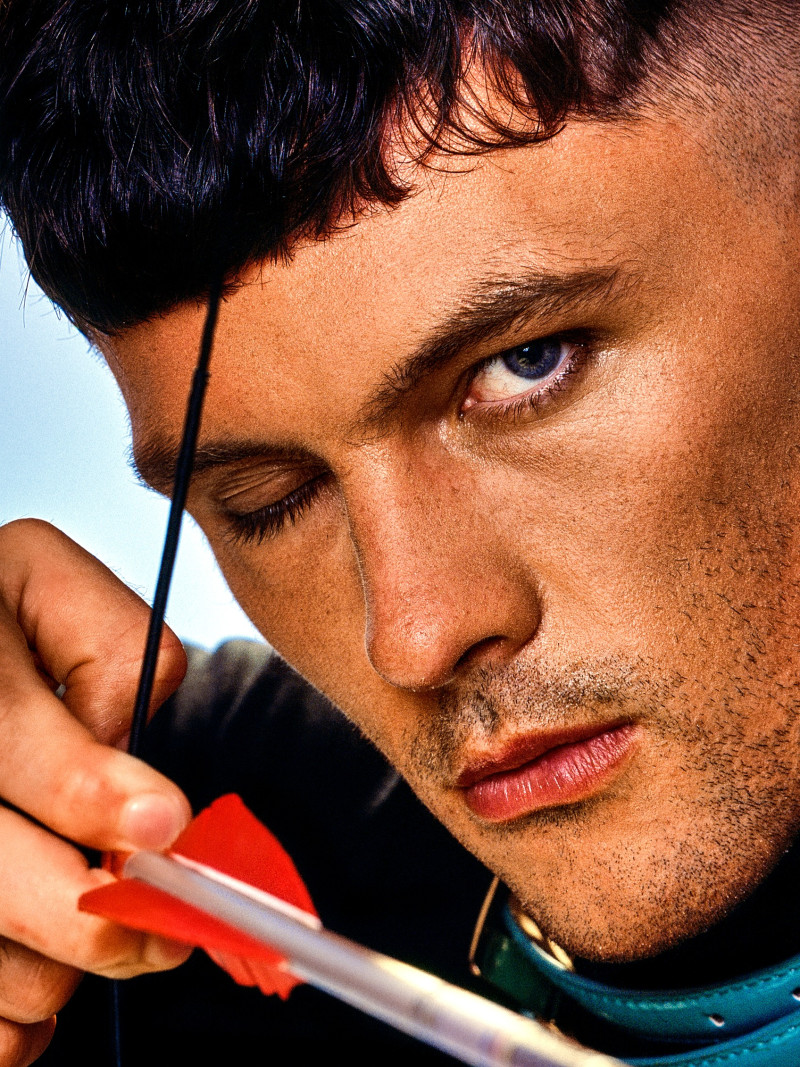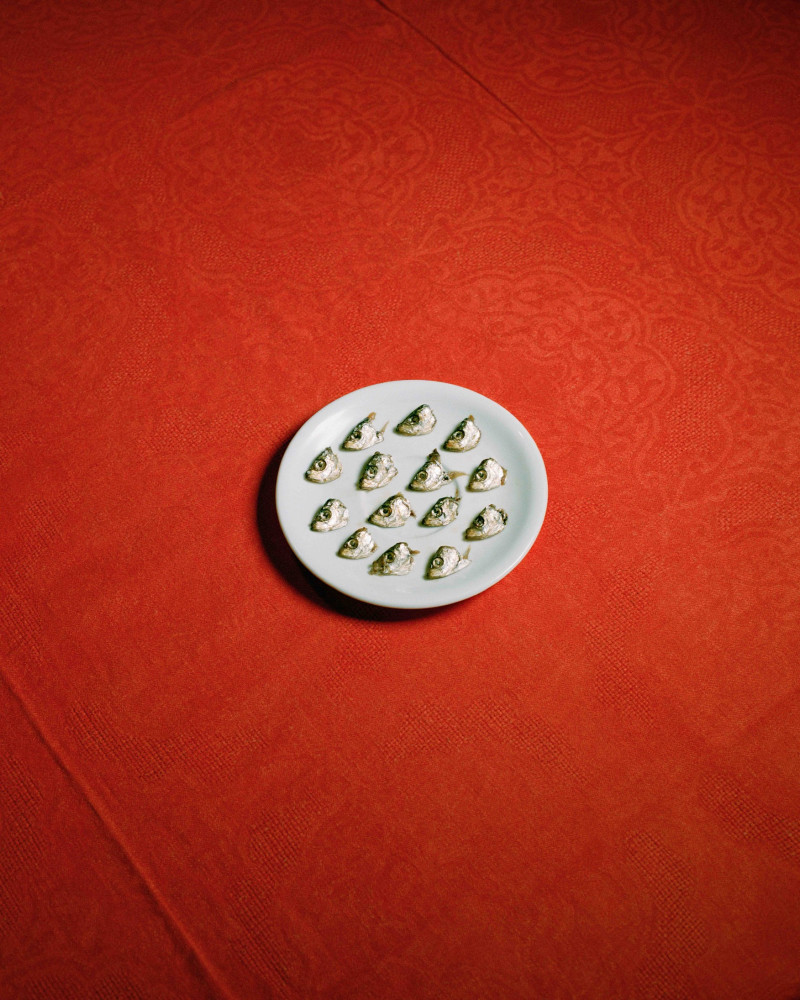The Art in Hospitality: Brent Harris and Andrew Browne
Words by Eliza Ackland
Photography by Jana Langhorst
From food stems the rituals and idiosyncrasies that make up the fabric of our being. The Art in Hospitality uses food as the stimulus to explore the minds of artists and creatives—because from food comes everything: necessity, nourishment, culture, ritual, connection and delight.
We revel in the opportunity to be guests in an artist’s home and realise the potential of the art in hospitality. As we fill our minds and bellies, we learn about the artist and their practice, discover their relationship to the rituals of preparing and sharing meals and talk about the philosophies embedded in the ceremony of cooking, eating and hosting.
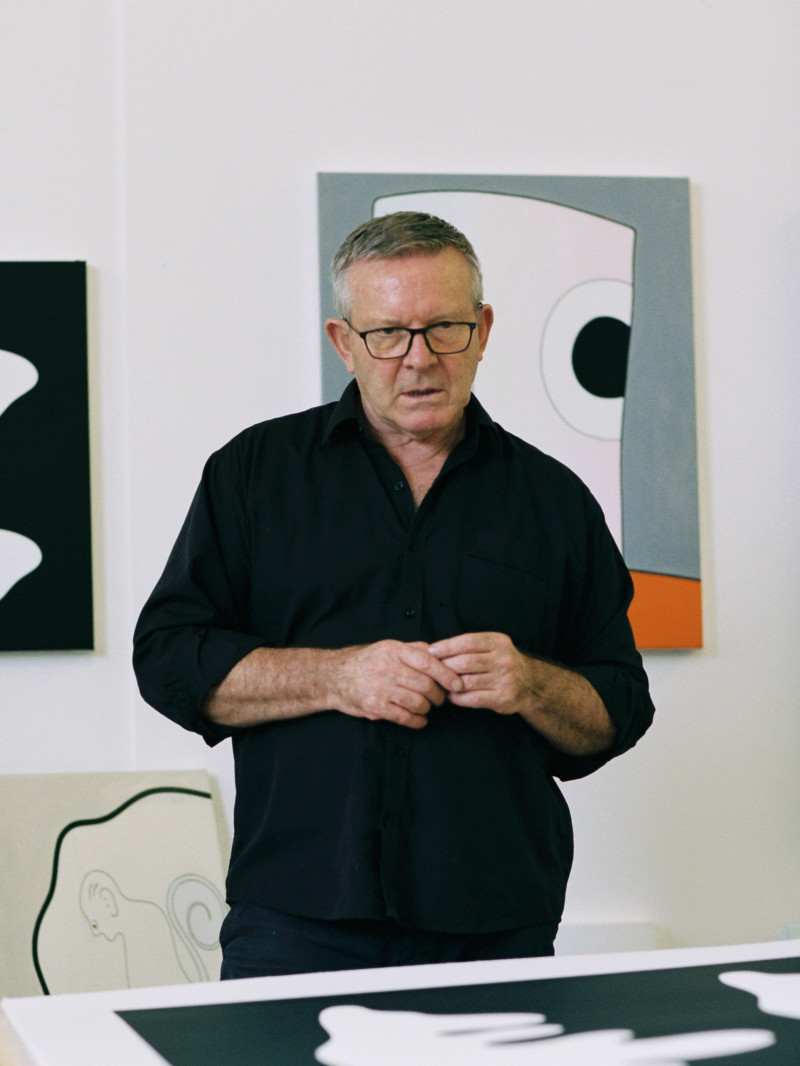
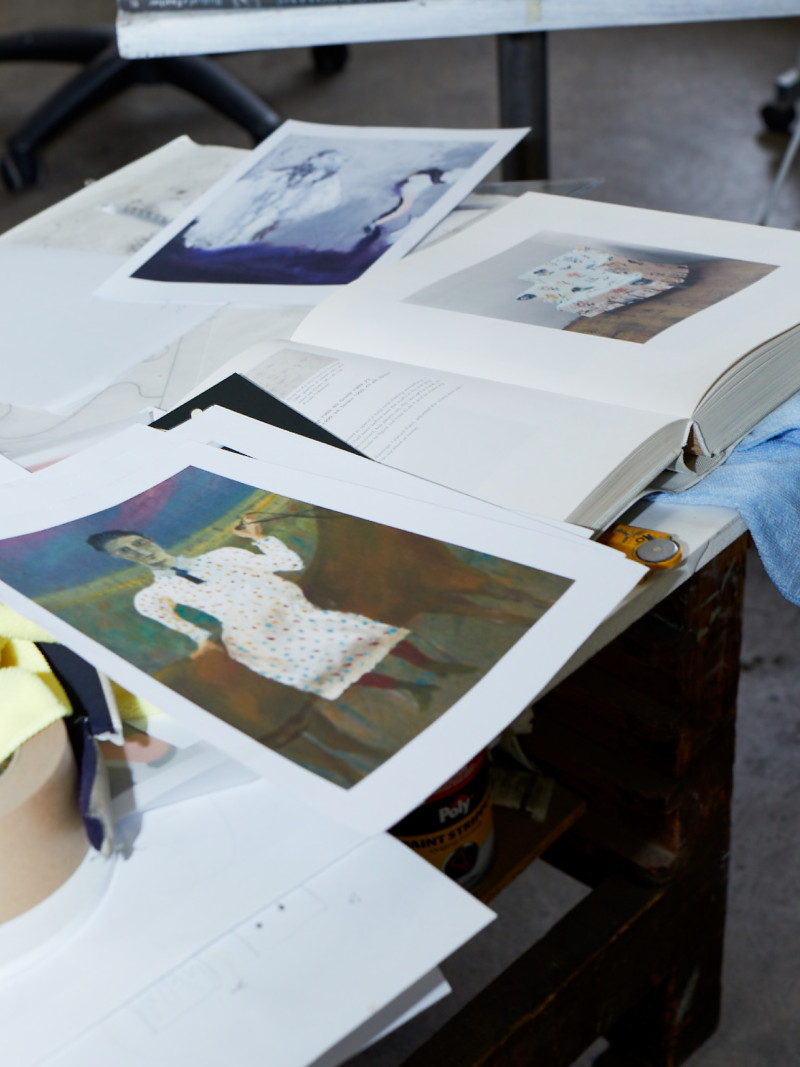
When visiting as guests, we believe you should only knock on the host’s door with one hand, reserving the other to carry something to share. On this autumn Sunday in Fitzroy, Melbourne, we knock on Brent Harris and Andrew Browne’s door armed with a plate of devilled eggs and a bottle of wine. The devilled eggs were inspired by a visit to Brent and Andrew’s studio in Collingwood a few days prior. Brent and Andrew have shared the studio space for 15 years, with Brent occupying the second story of the warehouse space and Andrew downstairs.
Brent’s space upstairs is relatively tidy, considering the complex themes that inform his work his process appears steady and deliberate. Brushes, books and tuna cans doubling as paint pots take up the tabletops. Several WIPs hang on the walls—a pansy, an elephant, a swamp, sperm, his mother, his father portrayed as a dark mask, a fried egg.
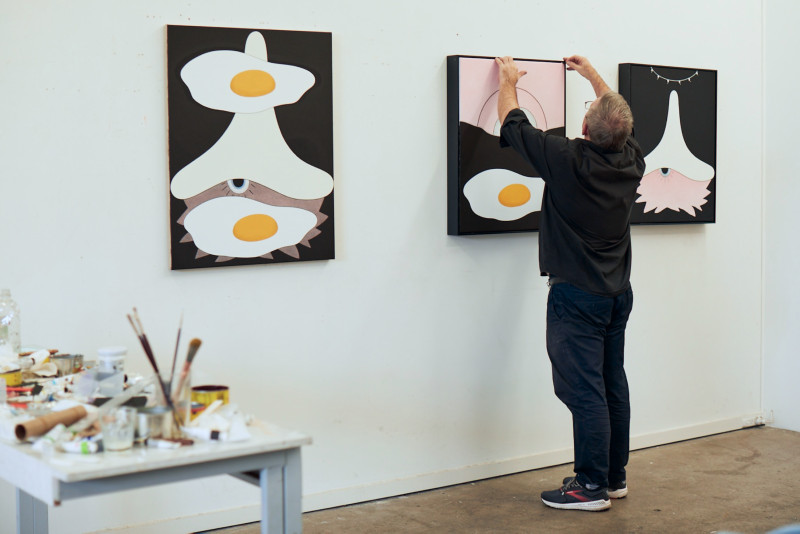
Brent is preparing for a show at Tolarno Galleries and pings around his space like the arcade game Pong, showing one work, pulling a book out from a shelf for reference, showing an earlier iteration. It's as if we’re witnessing him flick through the archives of the filing cabinet that is his mind. In the corner a golden yolk cracks onto a pink canvas. When asked about the symbolism of the egg, Brent explains that eggs often appear as symbols of origin, fertility and life. But for him, and speaking on behalf of the world, life is pretty fried at the moment, hence the fried egg.
So it's devilled eggs, prepared by the chef at Congress that we bring to share with Brent and Andrew as they prepare lunch for a group of friends on a Sunday afternoon. Tucked under the same arm is a bottle of white Garganega, 2021 vintage. A recent collaboration with Mac Forbes and Congress, Brent’s work To The Forest, 1999 adorns the wine label. The black silhouette of the print mimics the drip of the black wax that seals the bottle.
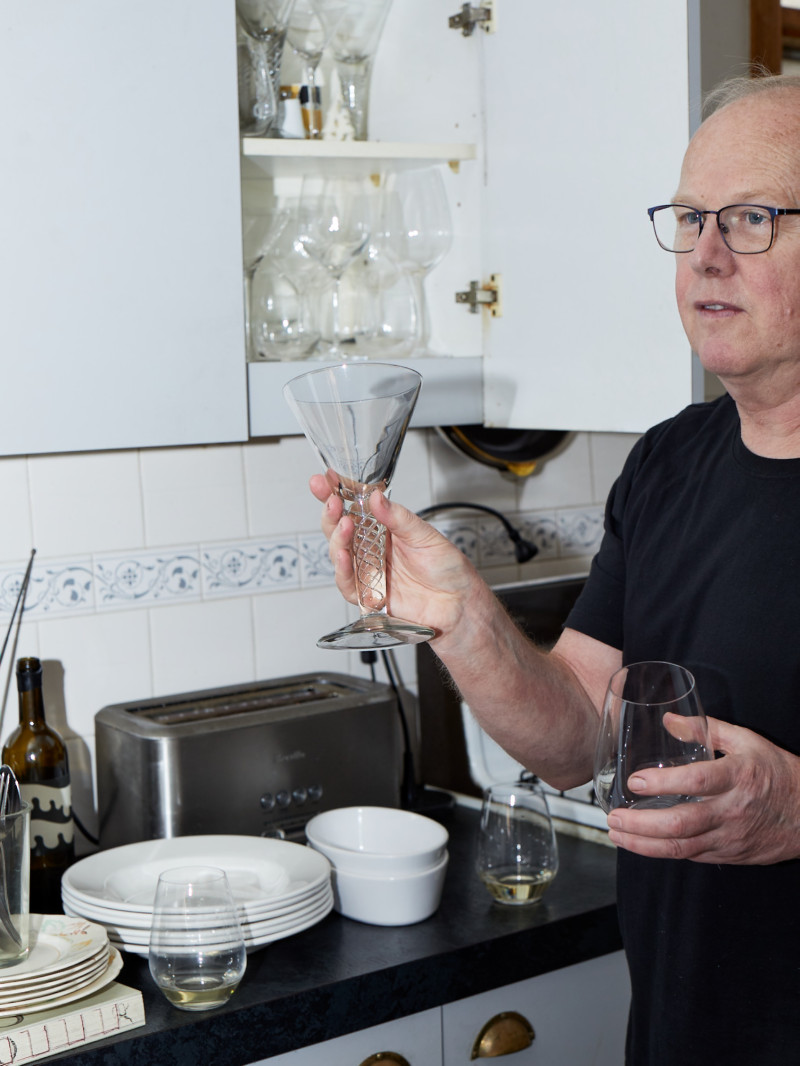
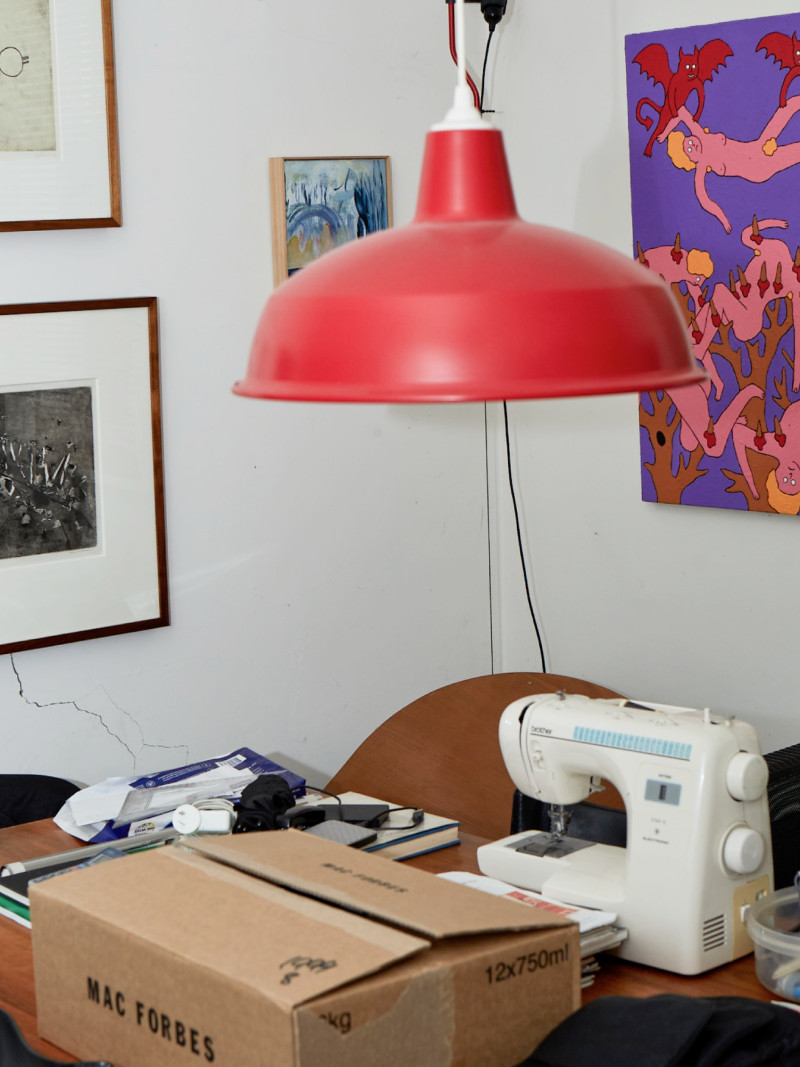
It's a few minutes after noon as Brent and Andrew welcome us into their home, so we agree it's appropriate to open the wine. We sit in the living room amongst the company of art adorned walls while Andrew potters in the kitchen prepping a simple pear cake he says never fails him.
Andrew is the head chef in this household. He’d once described Brent’s cooking as slop but admits Brent does make good curries and a nice bolognese. Brent says his secret to a good bolognese is milk. We discuss bolognese as a particularly personal dish that is most often inherited from one’s family. Brent explains his mother was a terrible cook. Her only redeeming dish was made from the rabbits they used to shoot and bring home as kids. She would put the rabbit on a roasting tray with onions and other veg—garlic was too fancy at the time. She’d top the rabbit with slices of white bread and fill the dish with milk and bake.
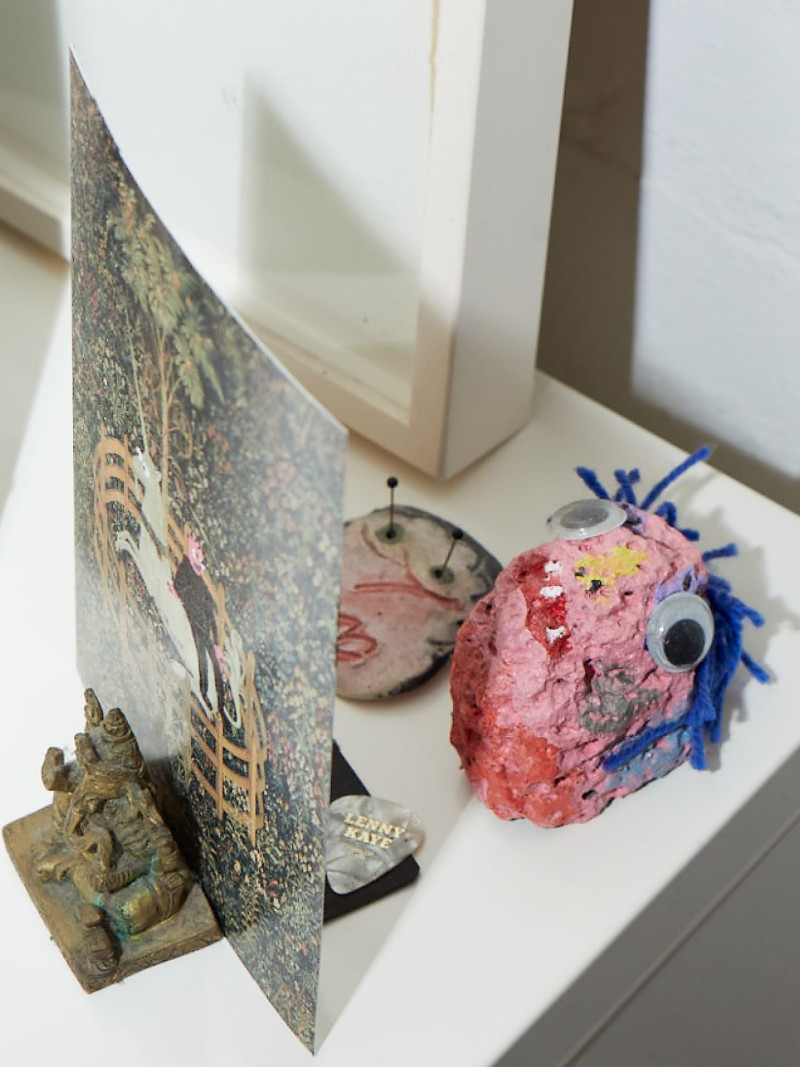
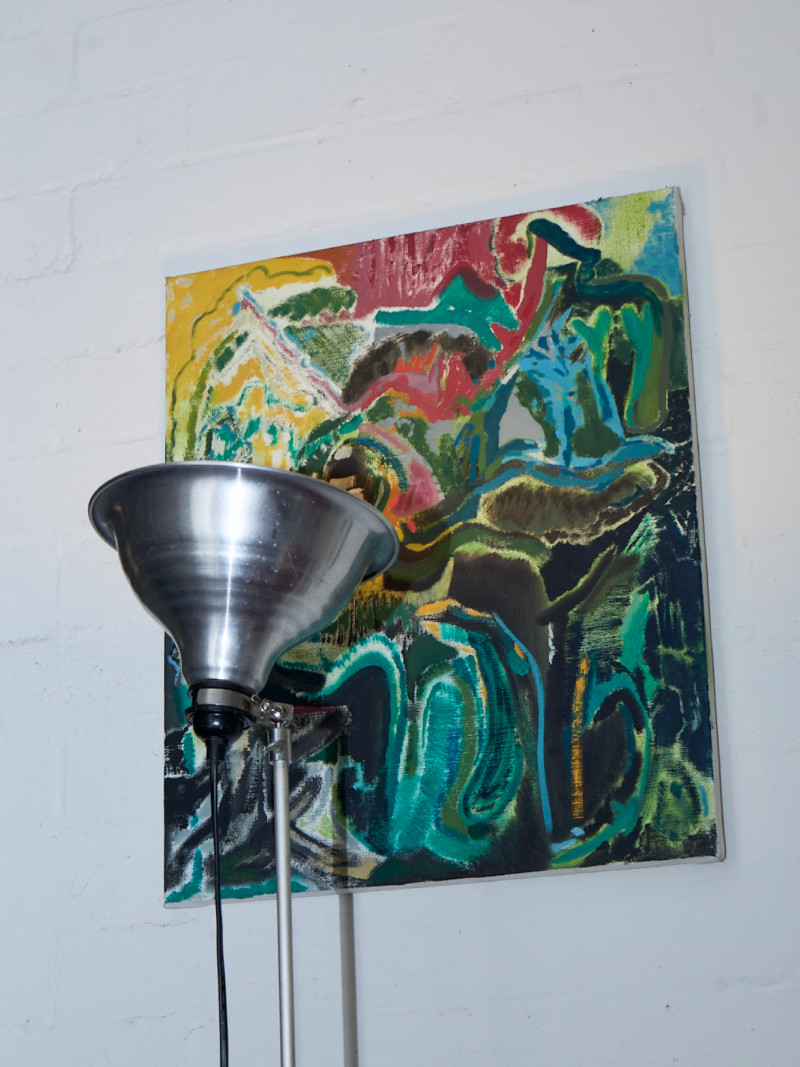
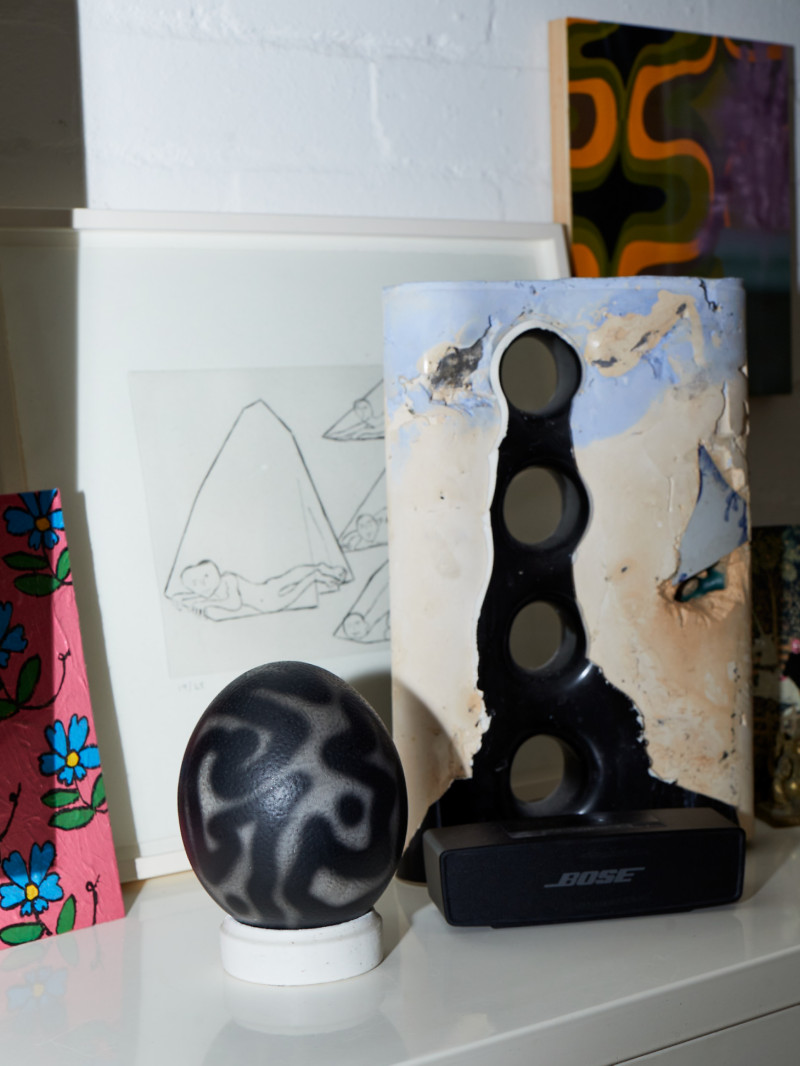
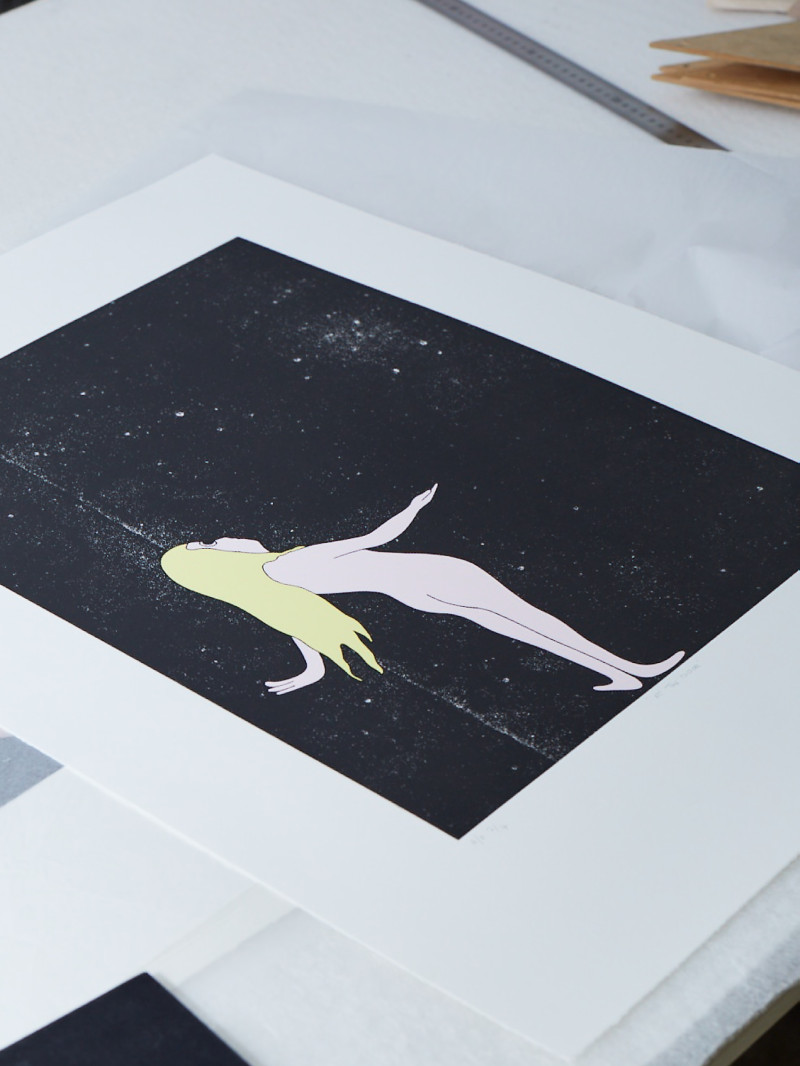
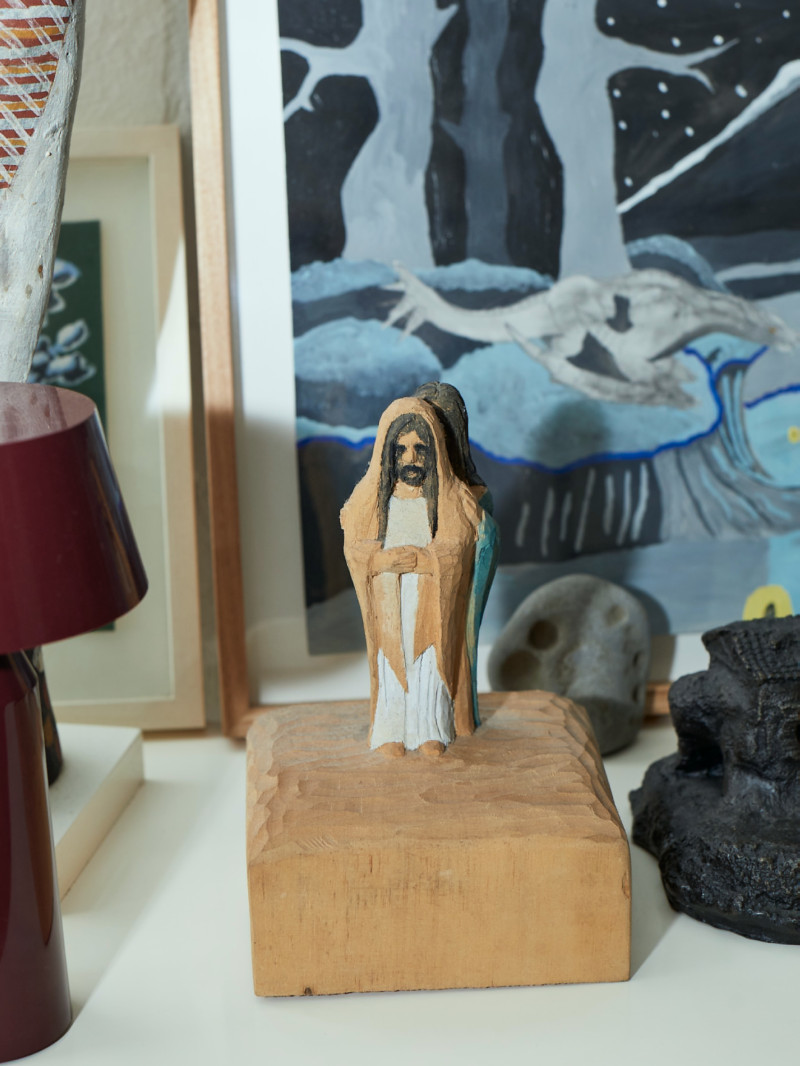
Brent grew up in New Zealand and moved to Melbourne in 1981. Over his career Brent has produced work that refers back to his challenging family dynamic in New Zealand. Through his work Brent confronts his father, comforts his mother and simultaneously acknowledges universal themes such as intimacy, desire, spirituality and mortality.
Andrew was born in Melbourne and works across painting, photography and graphic mediums including drawing, photogravure, intaglio and lithography. His works are often influenced by photographs of the urban environment, bringing a sense of realism that is coupled with a sense of abstraction and ambiguity.
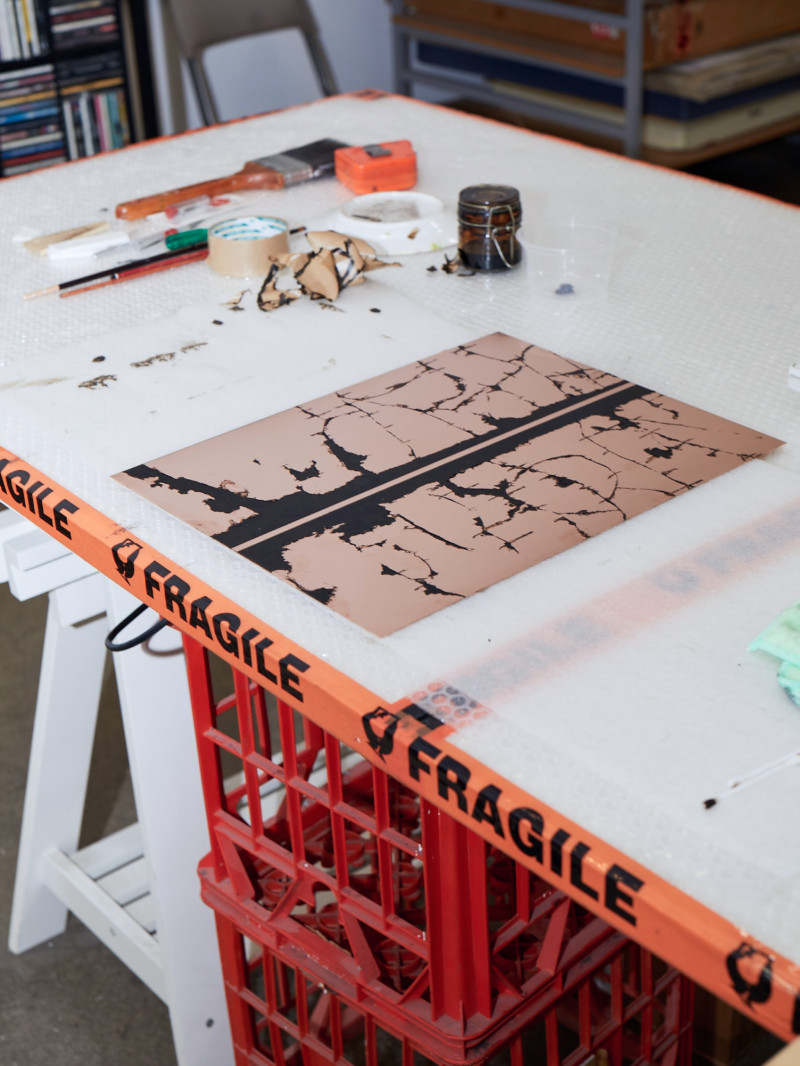

Let's start by talking about your daily routines. I’m interested in how you live and work together and the rituals that either bring you together or give you space. What do your days look like?
Brent Harris: One of us has to get up and make a coffee.
Andrew Browne: Yeah, that’s pretty standard. I wasn't drinking coffee for about two years. I just started again. I don't know what it is. And then sometimes I'll eat breakfast, sometimes I'll skip breakfast. Brent usually cooks himself a large breakfast.
BH: What do you mean “large”?
AB: Like leftovers from the night before. Like, if he’s got peas from last night he’ll do eggs with them and when we're eating bread, (which we're not at the moment), toast. Beans… he likes baked beans.
BH: He’s telling you what I have!
AB: What do I have, Brent? You can tell them what I have.
BH: When we were eating toast you'd have avocado, tomato, and a little olive.
AB: Brent usually asks at breakfast: “what do you think we should have for dinner?” I go, “I haven't even had breakfast. I can't even think about it!”
I noticed the tuna cans in the studio. Tuna in chilli oil. Is that a lunch favourite? And then they become the paint pots?
AB: Yeah he mixes a lot of paint in those to get particular consistencies.
I was thinking about the layout of your studio as well. Having two levels and one of you downstairs and one of you upstairs. Do you ever go downstairs and bug the other one about what they're up to?
BH: Yes, sometimes.
AB: If I’m starting a new body of work and I’m feeling hypersensitive, I’ve been known to ban Brent from my studio for up to a month. Because Brent's very blunt. I'm blunt when I go up to his studio. He likes the bluntness when I’m in his studio. Brent’s actually one of those people who likes people going into his studio offering opinions.
BH: Yeah, I like to know, “should this eyeball be this big? Or that big? Or a bit to the left?”
AB: When Brent comes down to mine he just says “no” and it's something I’ve invested a bit of time and energy in. So I get sensitive about that. But other times we can be more agreeable.
Our conversation is interrupted by the timer going off for the cake. Our noses knew the cake was close to ready as the room was filled with sweet cinnamon. Andrew checks the centre and it's not quite set.
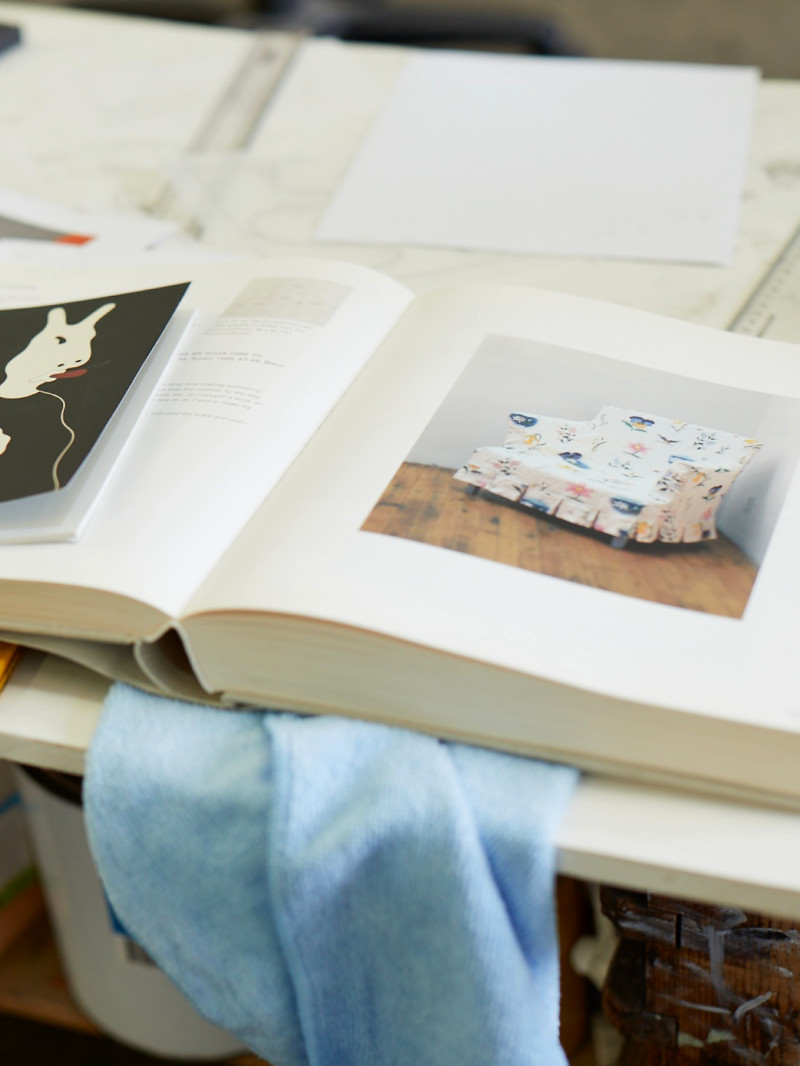
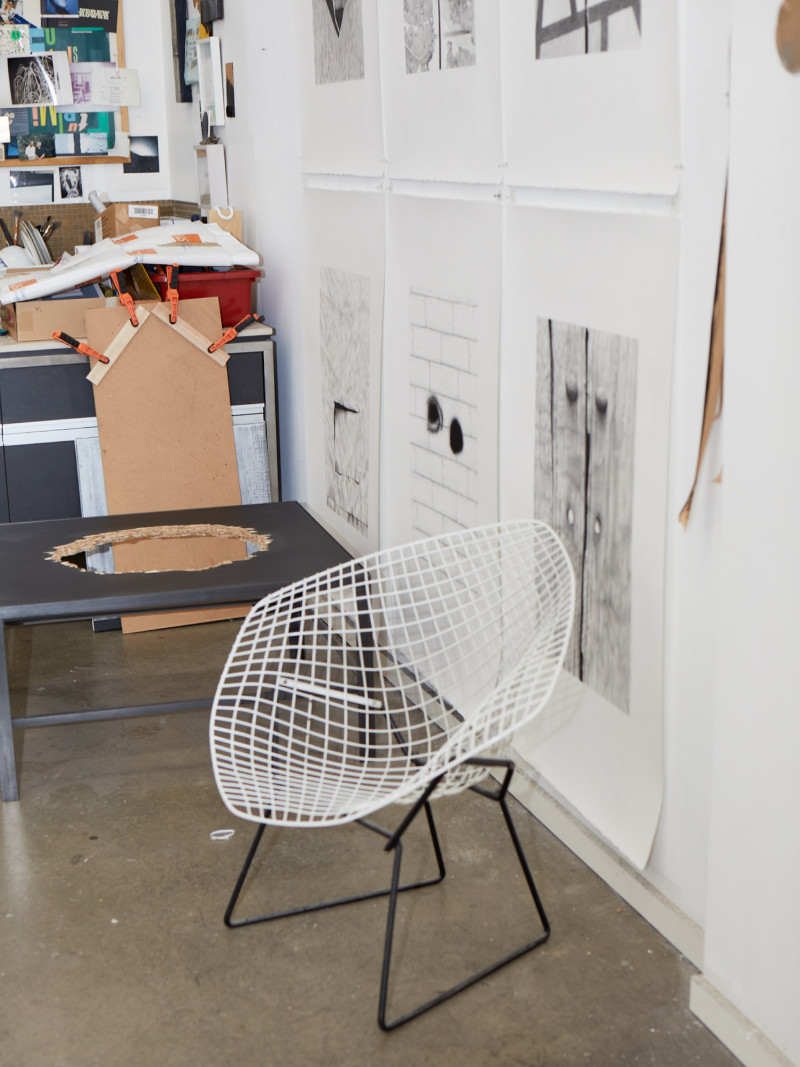
BH: I seek opinions about my work from maybe three or four people.
AB (as he checks the cake in the oven): I used to get more opinions from a couple of friends of mine. I think it’s just the way you are psychologically in yourself. One of the friends who’s coming for lunch today is really great in the studio. And it’s nice to have people you’ve known for a period of time and they’ve seen different series of works go through.
Are there any crossovers between how you work in the kitchen to how you work in the studio?
AB: Well, I’m the neat one.
BH: We’ve got quite a big library upstairs but the books start there and then they slowly migrate into my studio and they end up being stacked up in the corner. I really use my library. The books are a clean mess though.
AB: A lot of Brent’s work refers to art history. An anecdote: Fred Williams used to keep massive amounts of art postcards and if he was having a problem with a painting he’d just flick through the postcards and he’d use something there as a prompt. Brent often does that with the books, hence the large number strewn around. Whereas my practice is more an engagement with the urban environment - that becomes the source material, and I abstract from there. I’ve read a lot of art history, kinda processed it and now I guess I apply that to subjects from the real world. Which is different from Brent.
BH: You don’t use many recipe books either.
AB: We used to buy recipe books, generally I think a lot of people find this, you buy a recipe book and you use one or two recipes. It’s like the New York Times one, it's a fat recipe book with 1000s of recipes, yet I've only extracted a couple of recipes from it!
BH: We use a recipe for that lamb dish from a Mario Batali cookbook ‘Molto Italiano’.
AB: Abbacchio alla romana, which is lamb shoulder with vinegar. It’s slow cooked.
That sounds like good comfort food. What are your favourite comfort foods?
BH: Pasta. That’s why we’re fat.
And happy!
BH: Haha, generally happy.
AB: My comfort food is spaghetti with anchovies, garlic chilli and radicchio. Or pesto. I make my own pesto. And Brent might be catching up with his friend Kevin on a Wednesday night, during that season of basil being great, I’ll come home by myself, make some pesto and watch some TV, that’s my comfort.
We've been trying to cut down. We try not to have pasta at night anymore. It’s part of our low carb diet. Which is a pity because it is quite comforting. And I find having fish and salad, or meat and salad, or meat and broccoli…
Life’s too short for meat and broccoli.
BH: So in the kitchen I normally prep. And then he comes and puts it together. He says, “I’m not coming to the kitchen until you get out!”
AB: And then I go, “how many anchovies have you put in this?” Because he’ll start doing the anchovies.
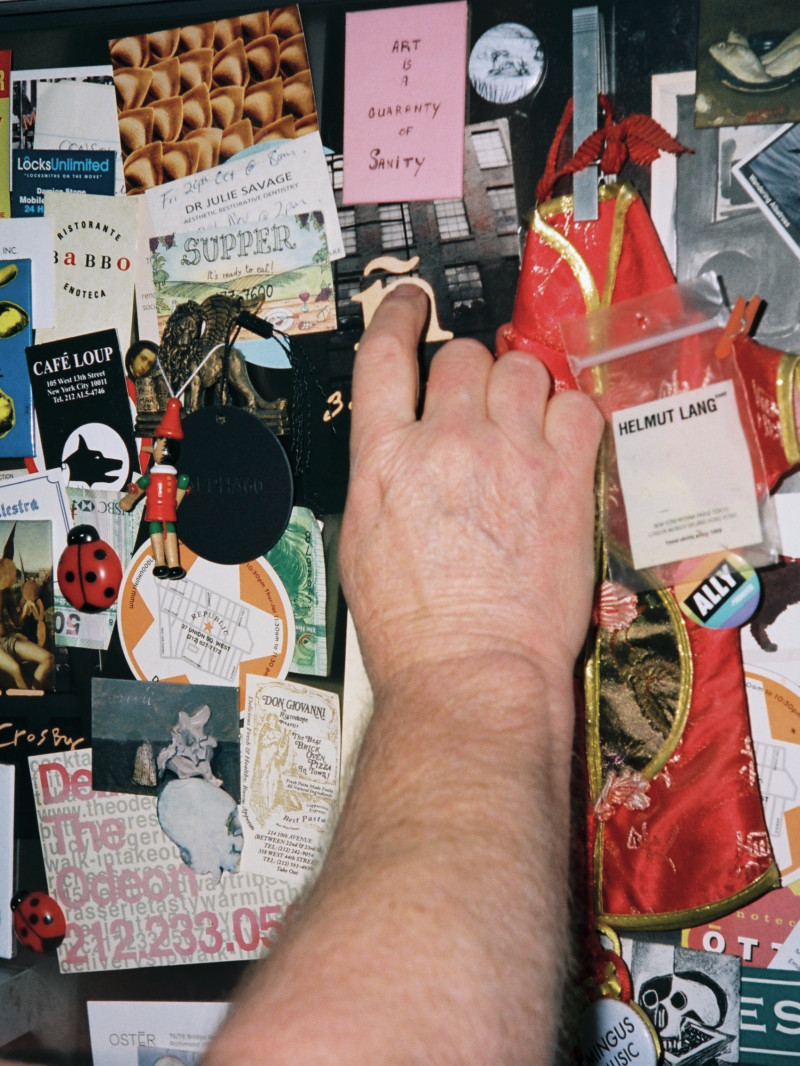
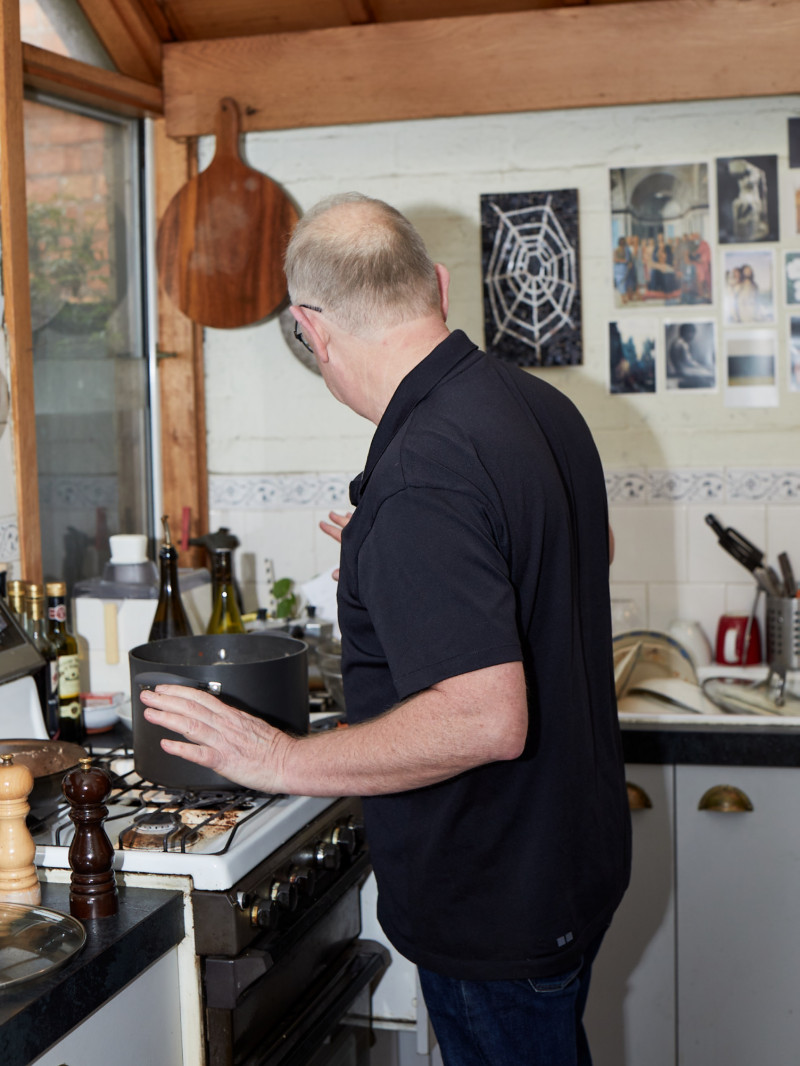
Do you think the way you approach preparing meals, particularly for other people, is something that’s informed by how meals were prepared for you when you were growing up?
BH: Nope.
So you’ve learnt that somewhere else?
AB: My father was a produce merchant. The person that brings in all the food from Queensland or Tasmania and sells it to the fruiterers. So he worked very hard for 40 years getting up at 1 in the morning to go to the wholesale markets. I used to work there a bit when I was a student. He specialised in potato, onion, Swede, pumpkin and watermelon. So we always had mashed potatoes. As a result, I avoid mash these days!
BH: My mum would throw all the vegetables into the pressure cooker. So she’s put in Brussel sprouts. And everything would come out grey. But they were quite delicious.
What about any memorable desserts or birthday cakes?
AB: We had pavlovas and things like that. My mother used to make trifles. She was very good at trifles actually.
Trifle is divisive, you either love it or hate it.
BH: We’ve moved from trifle to tiramisu.
AB: I'll tell you, Lupino in the city on Little Collins street, does a very good Tiramisu.
Our conversation is interrupted by the cake timer again. The centre around the pears has firmed up now. We decide it's time to try the deviled eggs.
AB: Down the hatch!
I wanted to ask you about what makes a good dinner party. I was looking into Immanuel Kant's Guide to a Good Dinner Party. Kant believed the number of dinner guests should follow Chesterfield's rule: no fewer than the Graces i.e., three, no more than the Muses i.e., nine. What's one of your rules for a successful dinner party?
AB: We used to do eight people often in the middle room. Usually it's a mix of people we know well alongside a newbie or two, but Covid has changed a lot, and we tend to have only a few people around the table these days. The recipe for a good dinner party for me is to spend half a day getting ready, doing all the prep so I’m not flustered at all.
BH: You’ll see him flustered later.
What about elements or things that you appreciate about a dinner party?
BH: Where we had dinner last night, an old friend, he sets the most amazing tables. It's quite formal. He buys lots of stuff at auction houses like old silverware, quite fancy. We borrowed these napkins from him last night!
AB: I like simple but nice glassware. Just simple.
Can you give us a tour of the kitchen, what are your MVP items in here? Or your favourite items?
AB: These beautiful salad servers, which were made in pewter by a close friend of Brent’s, Kevin Maritz, they’re very beautifully hammered servers.
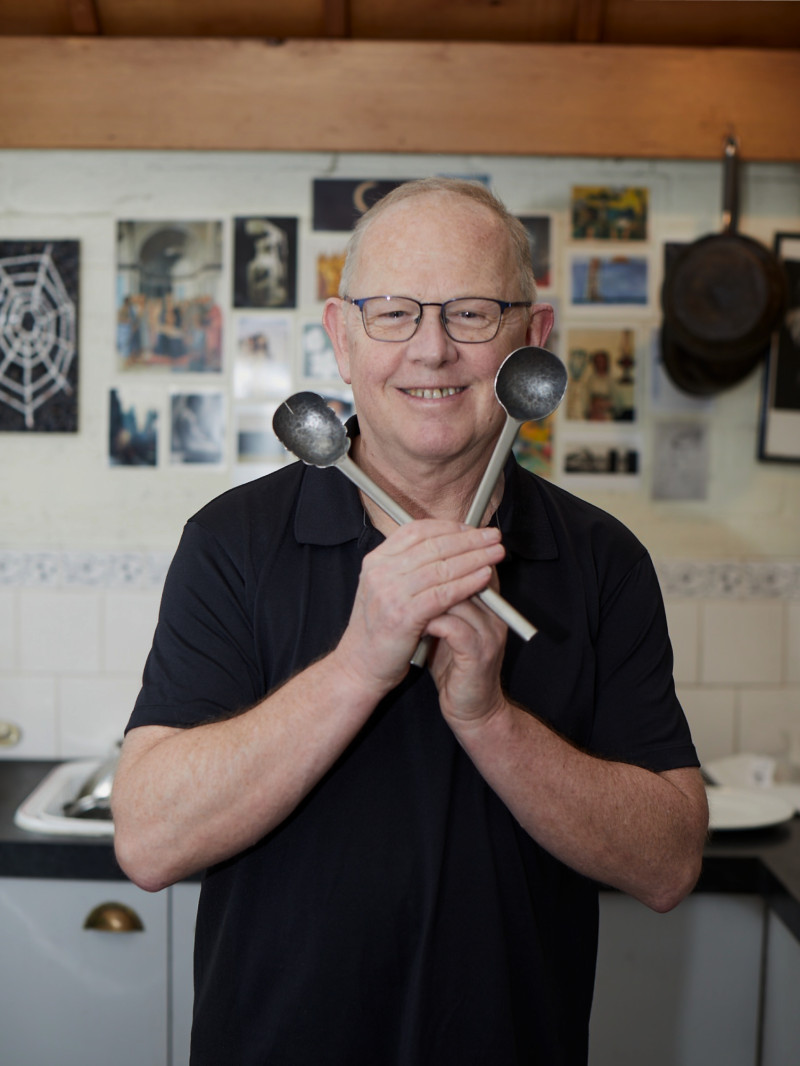
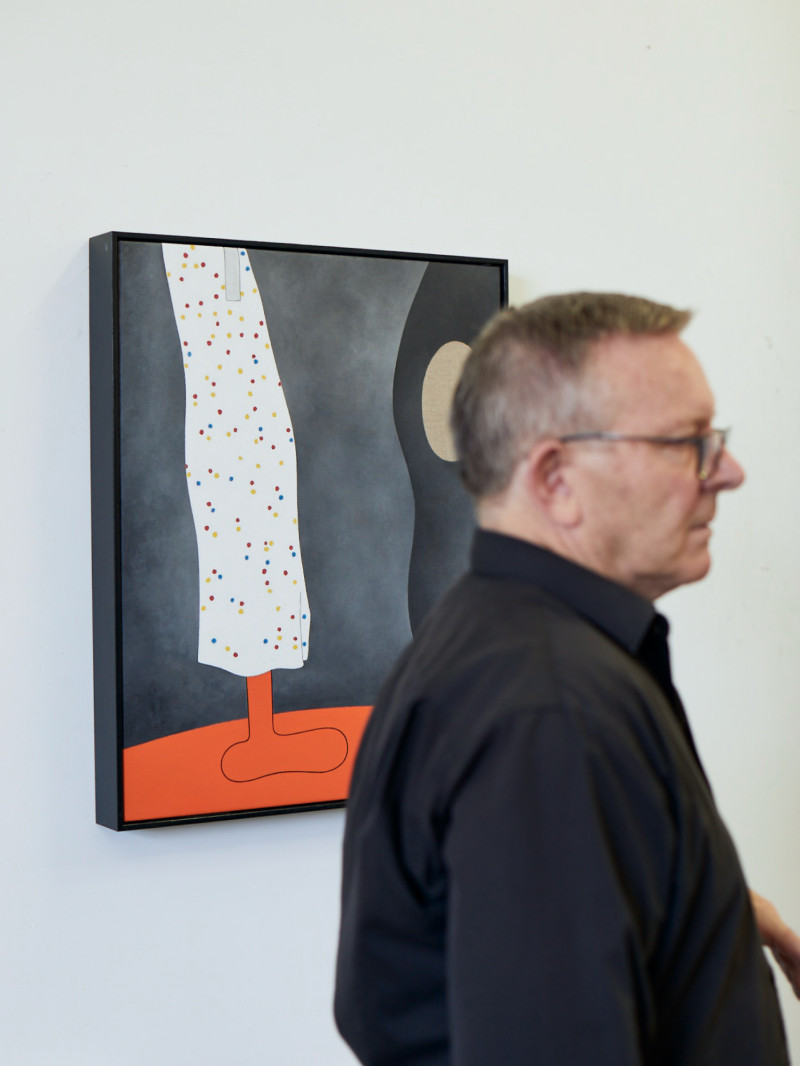
If your house was burning down and you had to grab something from the kitchen, what would you grab?
BH: Nothing!
You’d have your hands full of art.
BH: We’ve got about 18 Fred Williams…
AB: We ended up with some fabulous ones, including the circular one that's there on the back wall above the couches. That's the actual impression image of the print that's featured in his landmark book published in the 1970s. So we're very lucky to have that, that’s what I’d grab!
As we finish the bottle of wine and polish off the devilled eggs, we talk about different artworks in the living room while Andrew continues to prepare lunch. He sets a table in the backyard that has a lemon tree twisting above it like a well trained bonsai. An orange tree pokes its head over the fence, as if it's a neighbour saying hi. Sam, their cat is stuck on the wall outside. Andrew gets a ladder to help him down. He’s nine years old and looks like a ginger biscuit. Andrew puts olives on the table and prepares a plate of prosciutto di San Daniele and bresaola.
I notice how our conversations ping from art to food, but always back to art again. For Brent and Andrew, art is their comfort zone and food and wine is there to complement it.
Brent Harris will be showing ‘Monkey Business’, an exhibition of new work at Tolarno Galleries in August.
